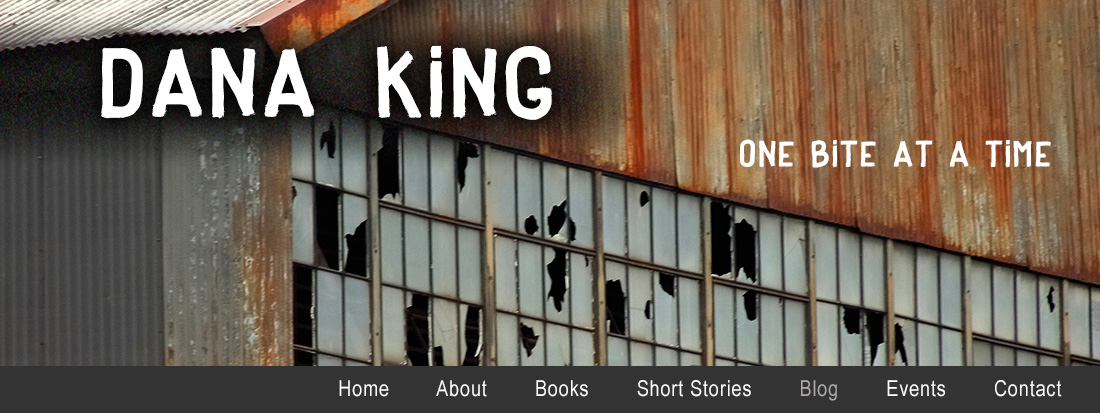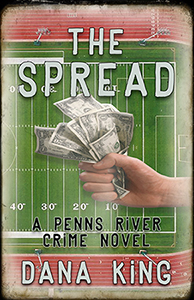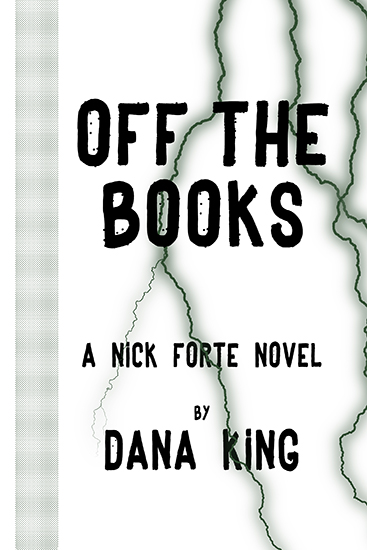I’ve said for years
the greatest and longest-lasting effect e-books might have on literature is to
make novellas financially viable as a form. Instead of being either too short
or too long for wither of the main formats, e-books would release the novella
from the price and size constraints by removing them altogether.
I still think that’s
true, but left out another possibility: get a group of talented authors—three should
be sufficient—and hook them up with a publisher who’s willing think outside the
box. (Down & Out comes to mind.) Voila!
You got yourself a collection of novellas.
Triple
Shot launched August 15 from Down & Out Books
and OBAAT is lucky to have not one—not two—but all three of the authors here
for a special Bonus Question™ edition of Twenty Questions. Each author gets
seven questions, with some overlap to be sure no one is bullshitting us.
So, in alphabetical
order, here are Ross Klavan, Tim O’Mara, and Charles Salzberg to talk about Triple Shot.
Ross Klavan’s novel,
Schmuck, was published by Greenpoint
Press in 2014. He recently finished the screenplay for The Colony based on the book by John Bowers. Nominated for an
Independent Spirit Award, his original screenplay, Tigerland, was directed by Joel Schumacher and starred Colin
Farrell. He has written screenplays for InterMedia, Walden Media, Miramax,
Paramount, A&E and TNT. As a performer, Klavan’s voice has been heard in
dozens of feature films including Revolutionary
Road, Sometimes in April, Casino, In and Out, and You Can Count On Me as well as in numerous TV and radio
commercials. In other lives, he was a member of the NYC alternative art group
Four Walls and was a reporter covering New York City and London, England. Ross’s
contribution to Triple Shot is Thump Gun Hitched.
One Bite at a Time: Tell us about Thump Gun Hitched.
Ross Klavan: A freak accident forces two L.A. cops to
play out a deadly obsession that takes them from back alley payoffs to hard
time in prison, then deep into the tunnel networks south of the border to a
murderous town that’s only rumored to exist. Before the last shot is fired,
everything they thought was certain proves to be a shadow and everything they
trusted opens into a trap.
OBAAT: I hate to ask where writers get their ideas, but where did you get this idea? Damn.
RK: One of my guilty pleasures is that sort of gritty style Western, you
know, where everything gets peeled away until the characters are left to face
off with what’s usually the worst of their own selves. So I wrote one. Added to
that, there was a guy I met who was a private hand-to-hand combat instructor
who was hired by the military and police. He said that he’d once been a cop but
did something really stupid at a cop party and spent a year locked up. I always
thought that might be useable.
OBAAT: How did you get involved in Triple
Shot?
RK: Each of these pieces was on the way to publication for another company
that went under. Tim, Charles and I all know each other from NYC and know that
nobody wants to pick up the bar tab. I think it was Tim O’Mara who came up with
the idea for the compilation for Down and Out Books, who’ve been terrific. Tim
had a great idea and we didn’t even buy him a drink. I guess we’ll have to.
OBAAT: You’ve written both novels and screenplays with success. How different
was it to write a novella?
RK: It seemed sort of like the bastard child of a screenplay and a novel.
You can’t waste time or words. I wanted it to move and I wanted to keep the
writing very physical…so that, too, was a way to mix what you can do in a novel
and a film.
OBAAT: You have quite a creative range, as you’ve acted in addition to you
novels and screenplays, and worked on short documentaries. Which is your
favorite and how do they influence each other?
RK: I can’t choose a favorite but everything influences the other. In a way,
you’re always doing the same thing but in a different form, sometimes pushing
the body into words, sometimes words into the body, but you’re always working
on rhythm and timing and sound and image and how to make a world and people
that somebody can get lost in…including yourself.
OBAAT: Who are your greatest external influences? (Not necessarily writers.
Filmmakers, other artists, whoever you think has had a major impact on your
writing.)
RK: I think if you’re smart, you’ll let yourself be influenced by just about
everything. Let me steer clear of naming writers, just for laughs, so, I’ve
always loved film, even bad ones and I can watch individual scenes over and
over, sometimes without sound…but of course, also, the usual great suspects
like Kubrick and Scorsese and even someone a little more epic like David Lean.
My wife, Mary Jones, is an abstract painter and also teaches at Rhode Island
School of Design and School of Visual Arts—she’s taught me incredible things
about composition that are as true for writing as for painting. Some odder
influences…there’s a painter named Mark Tansey, I’ve always like his stuff. The
great performance artist Allan Kaprow. There’s a teacher of theater and
clowning, Philipe Gaulier. And then, besides the happenings and history of my
own life, my writing’s been formed also by martial arts, tai chi, yoga,
psychoanalysis and talking to people in bars all over the world.
OBAAT: If Thump Gun Hitched were made
into a movie, who would play the major roles?
RK: Y’know, I don’t want to influence any possible
reader’s imagination—they’ll probably cast it better than I could. And if I
actually name somebody—say, Josh Brolin—some clown in the business could say,
“Gee, we were going to do this book…but Brolin isn’t available.” So cast it the
way you want it and all I’d like is a small under-5.
Tim O’Mara has been teaching math and special education in New York City
public schools since 1987, yet he is best known for his Raymond Donne mysteries
about an ex-cop who now teaches in the same Williamsburg, Brooklyn,
neighborhood he once policed: Sacrifice
Fly (2012), Crooked Numbers
(2013), Dead Red (2015), Nasty Cutter (January 2017). His short
story, “The Tip,” is featured in the 2016 anthology Unloaded. The anthology’s proceeds benefit the nonprofit States
United to Prevent Gun Violence. Tim wrote Smoked
for Triple Shot.
One Bite at a Time: Tell us about Smoked.
Tim O’Mara: Smoked is a first-person monologue from a sketchy
character explaining how he came to be in the uncomfortable position he now
finds himself. The structure of the story—no chapter breaks, just thirty
thousand words of him talking—was inspired by Stephen King’s Dolores Claiborne. The reader has to
take the narrator, “Aggie,” at his word. Or not.
OBAAT: You’re best known for your Raymond Donne series of novels. How different
was it to write a novella?
TO: “…best known” is a very kind statement. Thanks. The biggest
difference/challenge was creating a first-person narrator who was not only NOT
Raymond, but also NOT a New Yorker. I enjoyed writing in another voice and
making it a monologue instead of the usual dialogue-driven prose I usually find
such comfort in.
OBAAT: How did you get involved in Triple
Shot?
TO: Charles, Ross, and I each wrote a novella for an e-publisher who ran
into some business issues. I had previously written a short story for Down
& Out’s “Unloaded” and scheduled a meeting with its publisher, Eric
Campbell, to see if he’d be interested in putting together a trilogy of the
novellas. He said “Absolutely” and made the rest look easy.
OBAAT: I hate to ask writers where they get their ideas, but where did you get this idea?
TO: My lead character, “Aggie,” is based on someone in my life who lives by
prevarications and rationalizations. I had his (or her) voice in my head and
said to myself, “What would happen if she (or he) were put in this position?”
Man, was it fun to let loose on this person and then humanize him (or her) in a
way she (or he) has not been able to do in real life.
OBAAT: You’re a teacher in the New York City Public Schools by day. It’s easy
to see how that has affected (for the better) your Donne series. Did your
profession have any effect in Smoked?
TO: “Aggie” is basically a grown-up version of some of the kids I’ve worked
with who you know are lying because their lips are moving. Beyond that, Smoked is as far away from my New York
City teacher life as I’ve ever ventured in my fiction.
OBAAT: Who are your greatest influences? (Not necessarily writers. Filmmakers,
other artists, whoever you think has had a major impact on your writing.)
TO: Hitchcock, for sure. He famously said, “Interesting people do
interesting things.” I always keep that in mind when creating new characters or
developing established ones like Raymond Donne or his buddy, Edgar. I’m also a
big fan of Edward Hopper’s paintings. With a single image that—if you take the
time to really soak it in—he brings up a lot of questions and tells a different
story to each person. Also, I read The
Friends of Eddie Coyle once a year just to remind myself how you can tell a
story using mostly dialogue.
OBAAT: What moves you most in a work of literature?
TO: Presently, I’m amazed at how certain writers use poetry in their prose.
I just finished Richard Price’s The
Whites, and the way he constructs a sentence can only be described as
poetry. Reed Farrel Coleman also weaves poetry into his novels, as do Dennis
Lehane and Megan Abbott. I’m at the stage now where—when I’m finished with a
novel—I reflect and ask myself what I learned from the author.
Charles Salzberg is the author of the Shamus Award-nominated Swann’s Last Song, Swann Dives In, Swann’s
Lake of Despair (re-release Nov. 2016), Devil
in the Hole (re-release Nov. 2016), and Swann’s
Way Out (Feb. 2017). His novels have been recognized by Suspense Magazine,
the Silver Falchion Awards, the Beverly Hills Book Award and the Indie
Excellence Award. He has written over 25 nonfiction books, including From Set Shot to Slam Dunk, an oral history
of the NBA, and Soupy Sez: My Life
and Zany Times, with Soupy Sales. He has been a visiting professor of
magazine at the S.I. Newhouse School of Communications at Syracuse University,
and he teaches writing at the Writer’s Voice and the New York Writers Workshop
where he is a founding member. Today he’s going to talk about his novella, Twist of Fate.
One Bite at a Time: Tell us about Twist of Fate.
Charles Salzberg: Trish Sullivan is an ambitious TV reporter
working in a small, upstate New York market who receives a note from Meg
Montgomery, a beautiful young woman convicted of murdering her husband and two
children. Montgomery claims she’s innocent and Sullivan, smelling a big story
that may garner some national attention, investigates and turns up evidence
that the woman has, indeed, been framed. What happens next changes the life of
both women in unexpected ways.
OBAAT: This sounds like a “ripped from the headlines” story if ever there was
one. Was it?
TO: Nope. I guess it could have been but it was completely made up, a
figment of my runaway imagination. The idea came to me after thinking about the
legal concept of double jeopardy, and I took it from there.
OBAAT: How did you get involved in Triple
Shot?
TO: It’s all because of Tim O’Mara. He came back from Bouchercon Long Beach
a few years ago with news of a new subscriber website that was going offer
brand new crime novellas each month. They were looking to sign up crime writers
and Tim convinced me it would be fun and a good idea. I then convinced Ross, an
old friend of mine—we have lunch every week at Dos Caminos here in NYC. We all submitted
our novellas and they were accepted, but the site never got off the ground and
so we got the novellas back. It was either me or Tim, sometimes we’re confused
as the same person, but I have no problem giving him the credit, who suggested
we package them together. He met with Eric Campbell of Down & Out Books,
Eric loved the idea, and that was that. (Editor’s Note: That checks out with
what the others said. See what I did there? Separating them like that and not
letting them see each other’s answers? Reminds
you of Ed Exley’s masterful interrogation of the Nite Owl suspects, doesn’t it?
Oh, come on. Not even a little?)
OBAAT: You’re best known for your Henry Swann series of novels. How different
was it to write a novella?
TO: Very different. I didn’t want to use Swann. I wanted to create a whole
new story, a stand-alone. I had actually written Twist of Fate as a screenplay
years ago with a friend of mine—it was actually optioned several times but
never made. I thought it would make a better prose piece because I could go
much deeper (and darker).
OBAAT: You’ve written a lot of
non-fiction. How much, and what kind, of an effect has that had on our fiction
in general, and Twist of Fate in
particular?
TO: I started out wanting only to be a fiction writer, but I had to make a
living. I knew how to tell a story, which is what magazine writing is, and so I
got a job in the mailroom at New York magazine and after three months I quit,
sold one story to them and another to the Daily News Sunday Magazine. I found
that writing nonfiction was the best thing I could ever have done, even though
I looked down on it at first because I thought it didn’t take much imagination
and wasn’t very creative. I was wrong on both counts. It also taught me how to
write to a word count, which meant making every word count, how to tell a story
efficiently, and how to create realistic conversation and dialogue. And beyond
that, it gave me ideas for fiction. Swann was a skip tracer because I actually
did a profile of a skip tracer once and learned what they did and how they did
it. It also taught me research techniques and I was able to indulge my
curiosity by doing stories on things I knew nothing about.
OBAAT: Who are your greatest influences? (Not necessarily writers. Filmmakers,
other artists, whoever you think has had a major impact on your writing.)
TO: As far as writers, probably Norman Mailer, Philip Roth, Vladimir
Nabokov, Saul Bellow and Dashiell Hammett. But I love films and some of my
favorites are crime films, especially Goodfellas. But I’ll see every crime film
that comes out, and some of them more than once. I especially like the old
ones, the classics in black and white.
OBAAT: What are you reading now?
TO: I just finished reading Joe Clifford’s two Jay Porter books and I loved
them. I’m also reading T. J. Stiles’s Custer biography, lots of works by
students and a whole bunch of crime short stories. Next up is The Art of
Fielding.








No comments:
Post a Comment